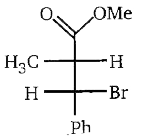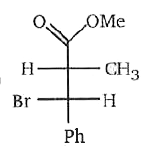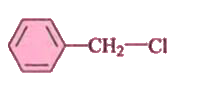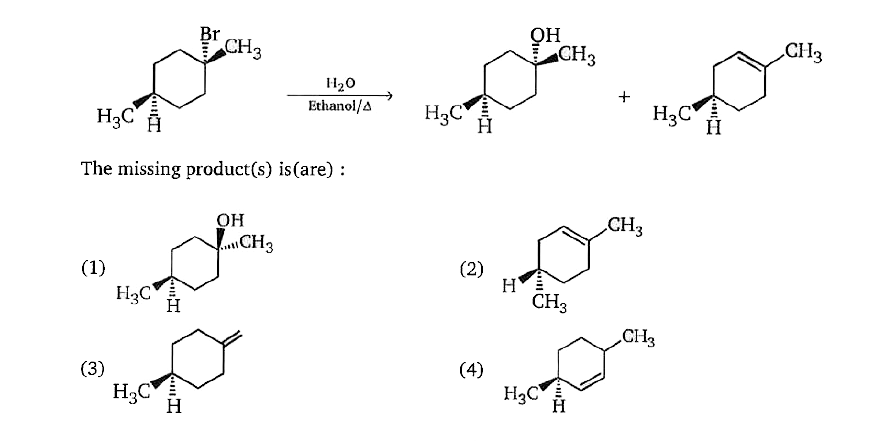Which of the following is an SN2 reaction:-
CH3CH2Br+KOH→CH3CH2OH+KBr
CH3CH2Br+CH3CH2ONa→CH3CH2OCH2CH3+NaBr
(CH3)3CBr+KOH→(CH3)3COH+KBr
CH3−CH2−CH3∣C∣CH3−Br+KOH→CH3CH2−CH3∣C∣CH3−OH+KBr
The correct Answer is:A, B
To determine which of the given reactions is an SN2 reaction, we need to analyze each option based on the characteristics of SN2 mechanisms. Here’s a step-by-step solution:
Step 1: Understand the SN2 Mechanism
The SN2 (Substitution Nucleophilic Bimolecular) reaction is characterized by a single concerted step where the nucleophile attacks the electrophile (alkyl halide) from the opposite side of the leaving group, leading to a transition state where both the nucleophile and the leaving group are partially bonded to the carbon atom. This mechanism typically occurs with primary alkyl halides due to steric hindrance.
Step 2: Analyze Each Option
1. Option A: A primary alkyl halide reacting with KOH.
- Analysis: Primary alkyl halides are favorable for SN2 reactions. The nucleophile OH− can effectively attack the carbon, resulting in an SN2 reaction.
- Conclusion: This is an SN2 reaction.
2. Option B: A tertiary alkyl halide undergoing Williamson ether synthesis.
- Analysis: Williamson ether synthesis generally requires a primary alkyl halide to proceed via SN2. Tertiary alkyl halides do not undergo SN2 due to steric hindrance and typically follow SN1 mechanisms instead.
- Conclusion: This is NOT an SN2 reaction.
3. Option C: A secondary alkyl halide reacting with a strong nucleophile.
- Analysis: Secondary alkyl halides can undergo both SN1 and SN2 reactions, but they are more likely to follow the SN1 pathway due to steric hindrance. The reaction conditions and the nature of the nucleophile will influence the pathway, but generally, secondary alkyl halides are less favorable for SN2.
- Conclusion: This is NOT a clear SN2 reaction.
4. Option D: A tertiary alkyl halide reacting with a nucleophile.
- Analysis: Tertiary alkyl halides are not suitable for SN2 reactions due to steric hindrance. They typically undergo SN1 reactions where the leaving group departs first, forming a carbocation.
- Conclusion: This is NOT an SN2 reaction.
Final Conclusion
Based on the analysis, Option A is the only reaction that represents an SN2 mechanism.
The SN2 (Substitution Nucleophilic Bimolecular) reaction is characterized by a single concerted step where the nucleophile attacks the electrophile (alkyl halide) from the opposite side of the leaving group, leading to a transition state where both the nucleophile and the leaving group are partially bonded to the carbon atom. This mechanism typically occurs with primary alkyl halides due to steric hindrance.
1. Option A: A primary alkyl halide reacting with KOH.
- Analysis: Primary alkyl halides are favorable for SN2 reactions. The nucleophile OH− can effectively attack the carbon, resulting in an SN2 reaction.
- Conclusion: This is an SN2 reaction.
- Analysis: Williamson ether synthesis generally requires a primary alkyl halide to proceed via SN2. Tertiary alkyl halides do not undergo SN2 due to steric hindrance and typically follow SN1 mechanisms instead.
- Conclusion: This is NOT an SN2 reaction.
- Analysis: Secondary alkyl halides can undergo both SN1 and SN2 reactions, but they are more likely to follow the SN1 pathway due to steric hindrance. The reaction conditions and the nature of the nucleophile will influence the pathway, but generally, secondary alkyl halides are less favorable for SN2.
- Conclusion: This is NOT a clear SN2 reaction.
- Analysis: Tertiary alkyl halides are not suitable for SN2 reactions due to steric hindrance. They typically undergo SN1 reactions where the leaving group departs first, forming a carbocation.
- Conclusion: This is NOT an SN2 reaction.
Based on the analysis, Option A is the only reaction that represents an SN2 mechanism.
Topper's Solved these Questions
- ALKYL AND ARYL HALIDEBOOK - ALLENCHAPTER - ALKYL AND ARYL HALIDEEXERCISE - EXERCISE-02
1 Videos
- ALKYL AND ARYL HALIDEBOOK - ALLENCHAPTER - ALKYL AND ARYL HALIDEEXERCISE - EXERCISE-04 [A]
1 Videos
- ALKYL AND ARYL HALIDEBOOK - ALLENCHAPTER - ALKYL AND ARYL HALIDEEXERCISE - EXERCISE-01
1 Videos
- ALKENE, ALKANE & ALKYNE BOOK - ALLENCHAPTER - ALKENE, ALKANE & ALKYNE EXERCISE - EXCERSISE-3
28 Videos
- Atomic StructureBOOK - ALLENCHAPTER - Atomic StructureEXERCISE - All Questions
62 Videos
Similar Questions
Knowledge Check
Which of the following are SN2 reactions?
A B
B C
C D
D
What is the product ofthe following SN2 reaction?
 A
A B
B C
C D
D
Aliphatic nucleophilic substitution is mainly of two type SN1 and SN2.SN2 reaction proceed with strong nucleophile in polar aprotic solvent. 3∘ halides do not give SN2 reaction. Inverted products are obtained in this reaction and mechanism of reaction occurs through the formation of transition state.
SN1 reaction proceed through the formation of carbocation in polar aprotic solvent. Solvent itself acts as nucleophile in this reaction. Racemization takes place in SN1 reaction.
Which one of the following will give SN2 reaction ?AH3C−CH3∣C∣CH3−ClB C
C DH2C=CH−Cl
DH2C=CH−Cl
Predict the order of reactivity of the following compounds in SN1 reactions :

View SolutionWhat could be the product(s) for the following SN1 reaction?

View SolutionWhich of the following will not undergo S1N reaction with OH−
View SolutionThe order of reactivities of the following alkyl halides for a SN2 reaction is :
View SolutionConsider the following E1/SN1 reaction

View Solution
